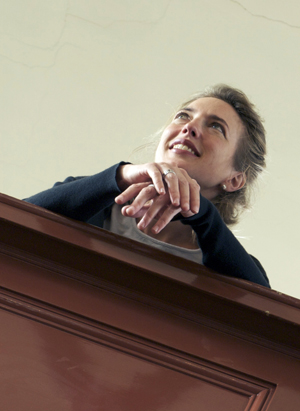Despite Georg Philipp Telemann’s mother’s clear efforts to warn her son against “note-poison” (Notengift) as a youth, Telemann (1681-1767) became one of Germany’s most prolific, accessible and popular composers in his day. When he set off to study law in Leipzig, he purposefully left all instruments, music and manuscript paper behind. However, as he later recalled in his memoirs, when his roommate uncovered in his underwear a psalm he had set to music, his true vocation as a musician was never questioned again.
Exposure to a large cross-section of society in his travels and in the many eminent positions he secured during his lifetime enabled him to soak up the latest vogue in musical styles. For instance, as Kapellmeister under Count Promnitz in Sorau, one of the earliest posts he held, he was obliged to study and compose in the manner of the great French master, Jean Baptiste Lully. The immediate result was the completion of two hundred French Ouvertures in just two years. (Händel remarked that his compatriot composed music with the kind of ease another might write a letter.) It is well documented that Telemann’s contemporaries marvelled at his command of the French, Italian and even Polish national musical idioms he incorporated into his works.
The “Paris” Quartets (1730) and “Nouveaux Quatuors” (1738) are a fine example of his contribution to instrumental music in the Baroque era. While they reflect his mastery of Corelli’s Italian Sonata/Concerto forms and Lully’s French Suite influences, they also provide a departure point for the forward-looking conversational galant style.
By the time Telemann made a long awaited eight-month sojourn to Paris in 1737-38, his compositions had already earned him great respect in France. Illustrious patrons and the finest Parisian musicians were among the many that subscribed to his published works outside Germany. In fact, the first set of six “Paris” quartets, originally published in Hamburg in 1730, were so well received in its eponymous city that publisher M. Charles Nicolas LeClerc determined a new edition “printed more clearly” and “on better quality paper” would surely enhance the overall performance experience. Telemann may have been all the more eager to travel to Paris in order to oversee the new editions of his previously published manuscripts.
A second set of quartets, the “Nouveaux Quatuors en six suites,” was published shortly after his stay in Paris in 1738. According to reviews in the local journal Le Mercure de France, they were performed widely and highly praised. Of the 237 orders on the subscription list for the Nouveaux Quatuors, 137 came from France alone. Each one of these quartets is formatted as a Suite, an especially appreciated genre in Germany. It begins with a Prelude, followed by subsidiary French dance movements. With head markings such as un peu gay, tendrement, flatteusement, modéré, to name but a few, Telemann may have been conscious of retaining his flourishing reputation in France. The chatty exchanges between each solo instrument are full of elegant gestures, fancy footwork and a demanding, yet natural-sounding virtuosity. There are also several references to Eastern European folk music, which Telemann had first encountered sometime around 1704-06 in his six-month visit to Upper Silesia under the auspices of Count Promnitz. He later wrote that upon hearing these folk musicians play their instruments, it left any “keen observer” with plenty of musical ideas to “last a lifetime.” (Surely an observation Bela Bartok similarly made a good two hundred years later!) Indeed, the inevitability in which the Chaconne final movement of the E-minor Quartet ends might suggest the memory of a beautiful, rolling landscape.
The period in which Telemann was composing his quartets was the clear beginning of the “demise” of the bass viol in France. For some it was difficult to accept the newly found “flattery” showered on that Italian export, the violoncello. Aware of the changing times, Telemann composed a part for either the viola da gamba or the cello, with the necessary idiomatic alterations for each, making it possible to play the quartets with whichever instrument was available. Telemann later wrote in his autobiography (1739) how he had listened with great joy and satisfaction to the performances of the quartets in Paris by Blavet on traverso flute, Guignon on violin, Forqueray the Younger on gamba and Edouard on cello. Interestingly enough, subsequent performances of the latter 1738 quartets mentioned in Le Mercure de France name the players as Blavet on flute, Marella on violin, Forqueray on gamba and Labbe, a local bassist from the opera orchestra.
The quartet form that Telemann first explored in his Tafelmusik (Musique de table) brought a “breath of fresh air” into the Baroque instrumental world, already heavily laden with the trio sonata genre. His masterful grasp of the two great pillars of national musical style, Italian and French, and his ability to translate this into a popular, even informal language, contributed to his great success, which resonated across the geographical boundaries during his lifespan.
© Jennifer Morsches, 2005
All programme and CD liner notes featured here are copyright of Jennifer Morsches; any licensing to reprint or reproduce them, please contact Jennifer.

